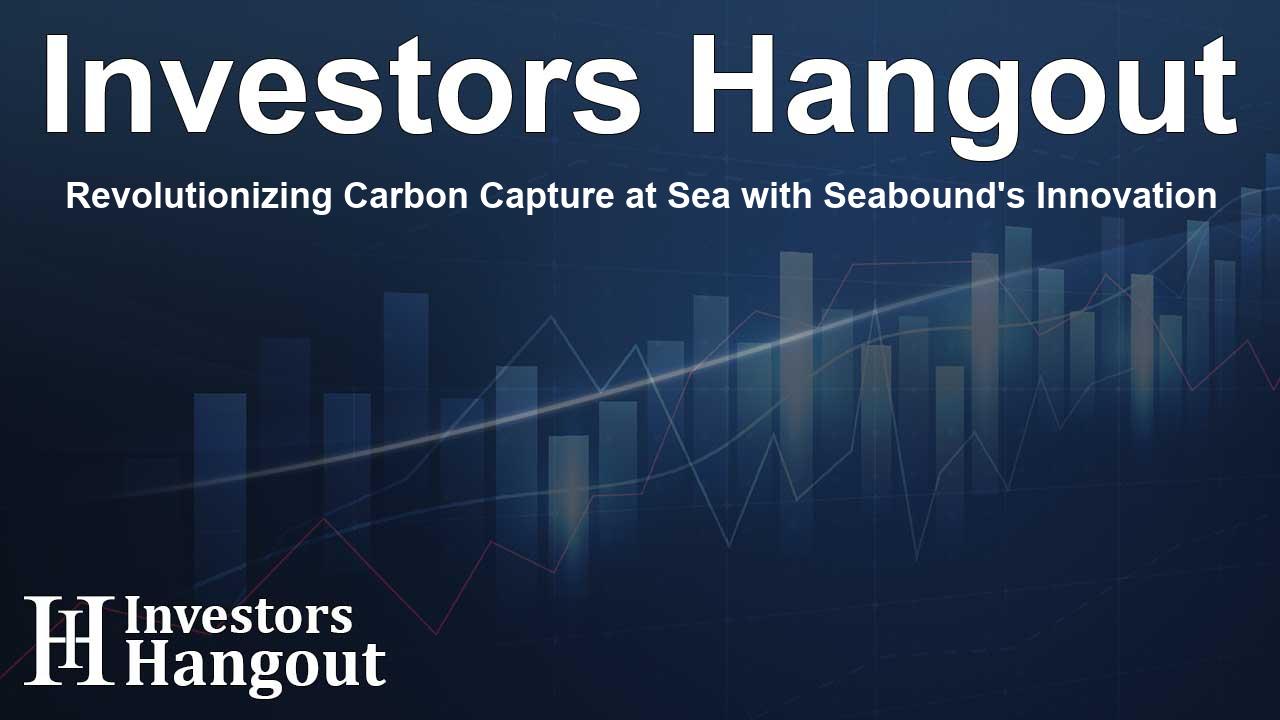Revolutionizing Carbon Capture at Sea with Seabound's Innovation

Seabound Leads Pioneering Marine Carbon Capture Initiative
In a groundbreaking step towards reducing carbon emissions in maritime shipping, Seabound has launched an innovative onboard carbon capture project in collaboration with Hartmann Group and InterMaritime Group. This initiative features the deployment of a compact carbon capture system aboard the cement-carrying vessel, the UBC Cork, which is managed by InterMaritime and owned by Hartmann.
Transforming Ship Emissions into Valuable Resources
Seabound's onboard carbon capture technology allows emissions to be captured and converted into limestone, a critical input for Heidelberg Materials, a leader in sustainable construction materials. The project signifies a remarkable advancement in the maritime industry, showcasing how captured carbon can be redirected for use in cement production, thereby supporting the creation of net-zero concrete.
Understanding the Impact of Marine Carbon Emissions
Marine shipping is responsible for nearly 3% of global CO? emissions. The industry has faced growing scrutiny due to its carbon-intensive nature. In response, the International Maritime Organization (IMO) has introduced measures to tackle emissions, including a carbon pricing strategy that could cost shipowners significantly.
Seabound's Compact Carbon Capture System Explained
The containerized carbon capture system developed by Seabound utilizes calcium looping technology, capable of capturing up to 95% of CO? and 98% of sulfur emissions from ship exhaust. This innovative process employs calcium hydroxide to absorb carbon dioxide, which is then converted into limestone and stored safely onboard until offloading.
Strategic Collaborations Driving Change
Seabound's partnership with industry leaders such as Heidelberg Materials and Hartmann is crucial for promoting scalable carbon capture technologies in maritime operations. CEO Alisha Fredriksson expressed pride in these collaborations, emphasizing their importance for achieving emissions reduction in sectors where carbon emissions remain a significant challenge.
Utilizing Captured Carbon for Sustainable Practices
Once the carbon is captured by the UBC Cork, it will be offloaded at a state-of-the-art facility where it will be utilized in the production of carbon-captured cement. The Brevik facility is notable for its ambitious goal of capturing up to 400,000 tons of CO? annually, facilitating a pioneering approach to sustainable cement production.
Targeting Comprehensive Emission Reductions
Both Heidelberg Materials and Hartmann are dedicated to decreasing their carbon footprints. By implementing Seabound's technology, they aim to decarbonize their operations more comprehensively, especially concerning maritime transport, a sector notorious for its high emissions.
Commitment from Industry Leaders
Captain Jayant Singh of Hartmann has stated that the group is determined to minimize its maritime carbon footprint by investing in environmentally friendly technologies. The integration of these innovative solutions into everyday operations reflects a forward-thinking approach to sustainable shipping.
Future Prospects for Carbon Capture in Shipping
Seabound's collaboration with Hartmann and InterMaritime marks a pivotal shift towards a low-emission future for maritime transport. CEO of Intership Navigation Co. Ltd., Dieter Rohdenburg, stresses the significance of this collaboration in promoting carbon capture technology across the shipping sector.
The project is backed by Eurostars, part of Horizon Europe, which fosters innovative projects aimed at tackling emissions in various industries. This support underlines the importance of collaborative efforts to expedite the transition toward sustainable shipping practices.
Expanding Carbon Capture Technology Across Europe
Seabound's commitment to expanding its carbon capture technology within Europe reflects its ambition to play a significant role in international efforts to combat climate change. By addressing shipping emissions, which contribute substantially to the global carbon footprint, the company aims to make a substantial impact in the fight against climate change.
Frequently Asked Questions
What is Seabound's new initiative about?
Seabound has launched an onboard carbon capture project aboard the UBC Cork, aiming to transform ship emissions into usable limestone for cement production.
How does Seabound's technology work?
The technology uses calcium looping to capture a significant amount of CO? from ship exhaust, converting it into limestone stored onboard until it's offloaded at port.
Why is this project significant for the shipping industry?
This project represents a critical advancement in maritime carbon capture technology, providing a viable solution to reduce emissions in a sector facing increased regulatory scrutiny.
Who are the key partners involved in this initiative?
Seabound collaborates with Hartmann Group and InterMaritime Group, along with Heidelberg Materials, to implement this innovative solution in maritime shipping.
What are the future plans for Seabound?
Seabound aims to continue expanding its carbon capture systems across Europe and is committed to capturing 100 million tonnes of CO? annually by 2040.
About The Author
Contact Henry Turner privately here. Or send an email with ATTN: Henry Turner as the subject to contact@investorshangout.com.
About Investors Hangout
Investors Hangout is a leading online stock forum for financial discussion and learning, offering a wide range of free tools and resources. It draws in traders of all levels, who exchange market knowledge, investigate trading tactics, and keep an eye on industry developments in real time. Featuring financial articles, stock message boards, quotes, charts, company profiles, and live news updates. Through cooperative learning and a wealth of informational resources, it helps users from novices creating their first portfolios to experts honing their techniques. Join Investors Hangout today: https://investorshangout.com/
The content of this article is based on factual, publicly available information and does not represent legal, financial, or investment advice. Investors Hangout does not offer financial advice, and the author is not a licensed financial advisor. Consult a qualified advisor before making any financial or investment decisions based on this article. This article should not be considered advice to purchase, sell, or hold any securities or other investments. If any of the material provided here is inaccurate, please contact us for corrections.
